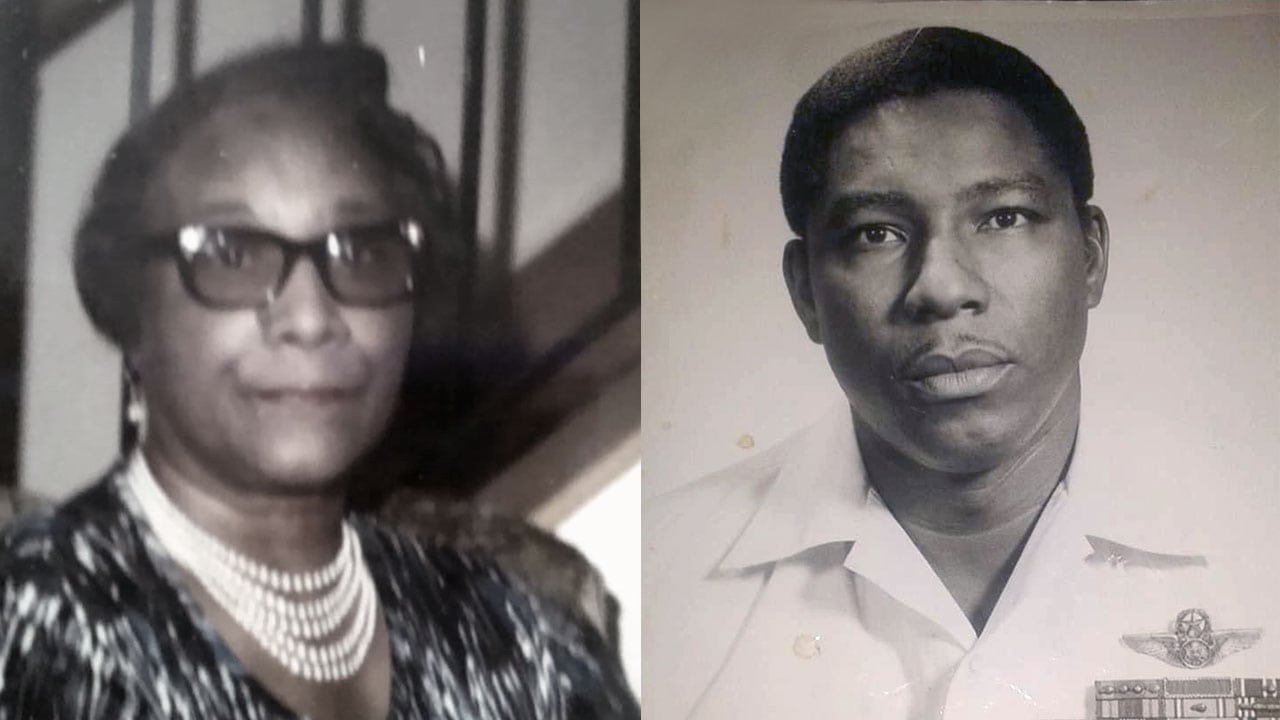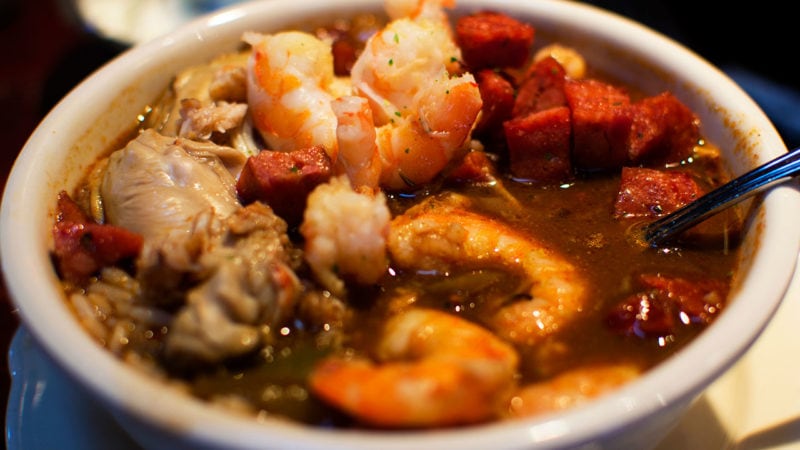Last Updated on July 25, 2023
I’ve never spent a holiday season without my late grandfather Herman’s gumbo. Known as Gampy to his grandkids, he was the king of the kitchen and our family’s undisputed gumbo master. To this day, every bowl calls to mind the image of Gampy plopping fresh crab legs into a large roasting pot of roux-like muddy water—making sure to shield the secret ingredient from any wandering eyes or inquisitive five-year-olds.
This dish has been such a constant in my life for so long, I had never thought twice about where it came from or what it means for families like mine—until recently. I called my mom, started a google search, and dove into the general and personal history of my grandfather’s gumbo.
What You Need to Know About Gumbo
At its basic level, gumbo is a savory stew. While many people associate it with Louisiana cuisine, its history runs deep with pathways from West Africa to the American South. Though sometimes speculative, most sources support the idea that the name derives from an Angolan word for okra (ngombo), suggesting that it was originally thickened with the vegetable. Some believe the dish is named after the filé powder, called kombo by the Choctaw people native to the region, also used to flavor and thicken gumbo. Whichever the case, it’s clear that the dish itself has a rich, multi-cultural history incorporating African, Indigenous, and French influence (using roux as another way to thicken the stew).
I love gumbo, not only because it’s delicious and reminds me of my grandfather, but it’s a dish that connects the Black community, no matter where in the country they reside. It’s a dish of innovation—with home chefs often opting out of using exact measurements and those who’ve migrated to other regions incorporating ingredients native to their area. Depending on whose kitchen you’re in, you might find a pot swimming with crab, chicken, sausage, shrimp, oysters, and many other mixes of land and sea. You’ll definitely find some strong opinions on whether or not to add tomato sauce to your roux.
Gumbo, My Grandfather’s Way
In Gampy’s gumbo, you’ll find all of the above (but if you can taste the tomato, you’ve gone too far). That wasn’t always the case, I learned while on the phone with my mother last week. Even our family recipe has evolved over the years, she shared. Gampy received the gumbo recipe from his Louisiana-born mother, a poor widow raising her two kids in a small town in Texas.

They usually didn’t have the money to buy all the ingredients I know to be essential to our gumbo today, so my great-grandmother only made the dish on very special occasions. My grandfather would go fishing for crawdads to put alongside the chicken and sausage scraps in his mother’s gumbo. It wasn’t until my grandfather, much older and married with kids, joined the military and relocated to the west coast that he incorporated my favorite ingredients into our family’s recipe. My mom recalls Gampy coming home from trips to Alaska with live king crab, just itching to get them into the roaster.
Still only having the dish on special occasions, my mother remembers the excitement that came with her father heating up the roasting pot. We cracked up laughing over the phone while she retold the story of how for decades, Gampy would share his recipe but conveniently leave out the secret ingredient. One day, my mom caught him adding an unfamiliar ingredient to the pot, realizing that’s what was needed to perfectly imitate his signature dish.
The Power of a Family Recipe
Those stories live in my family’s gumbo. That excitement is the same feeling I get when I walk into the kitchen of my late grandparents’ San Francisco home and see that same roaster older than I am sizzling on the countertop. To my family, this dish is so much more than a savory stew. It’s a celebration, marking another Christmas spent together or the dawn of a new year. It’s a competition among my mom and her sisters, judging whose gumbo tastes the most like their father’s. It’s how we stay connected to Gampy and introduce him to the newest members of our family.

I’d like to introduce you to my grandfather with this recipe. It’s not his exact recipe (he’d never forgive me for putting it on the internet). And in true Herman fashion, there are no exact measurements—just your intuition. I’ll leave you with what he first told my mother: the secret is in the roux.
Gumbo Recipe
Ingredients
- Butter
- Oil
- Onions (finely chopped)
- Garlic (finely chopped)
- Flour
- Chicken stock
- Tomato sauce
- 1 ½ jars of gumbo filé powder
- Old bay seasoning
- Cajun spices
- Cornstarch
- Crab legs
- Spicy sausage links
- Chicken (with skin preferably)
- ButcherBox Raw Gulf Shrimp
- Jarred oysters
Instructions
Preparing the roux
- Set electric roaster oven to hot or heat stovetop pot on high.
- Add butter and oil with finely chopped onions and garlic.
- Add chicken stock and flour until you reach your desired thickness, stir often.
- Add a can of tomato sauce (remember, you should not taste the tomato after seasoning). Continue to stir.
- Stir in a jar and a half of gumbo filé powder, some old bay seasoning, and cajun spices.
- Let roux cook until it begins to look like muddy water. Add more filé powder, old bay seasoning, and cajun spices if it doesn’t look muddy enough.
- If your roux needs more thickening, add cornstarch.
- This is where my grandfather adds his secret ingredient. Can you guess what it is?
- Simmer on medium for an hour and check for consistency and color.
Adding the meat
- Brown your chicken and sausage in a skillet. You can cut chicken into bite-sized pieces or shred it.
- Once the roux is to your liking, add chicken, chopped sausage, and crab legs to the pot.
- Cook on medium for 2–3 hours, stirring occasionally.
- Add jarred oysters, including the juice, and shrimp. Simmer for another hour.
- Serve in a bowl over jasmine or basmati rice.
For Black History Month, ButcherBox is celebrating Black foodways and sharing our favorite recipes from Black authors. Click Here To Learn More.
Camille is a Copywriter at ButcherBox with a background in storytelling and environmental advocacy. She believes that words have the power to change the world. In her spare time, she writes and performs poetry, curates playlists she'll forget about in a week, and crochets until her wrists ache.



